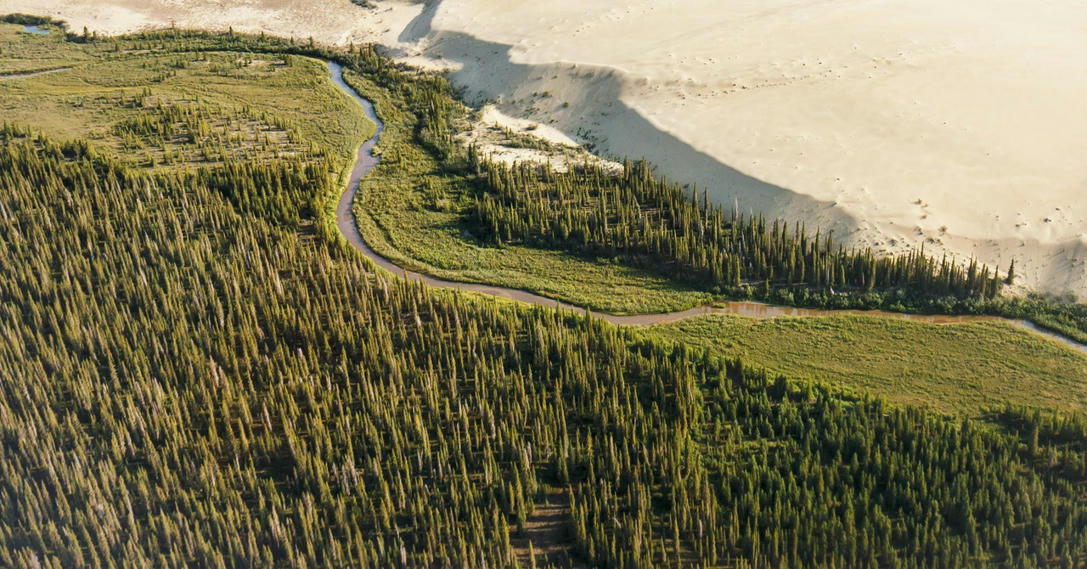 Arctic greening is a blaring warning light on the climate damage dashboard, both for the region and the world at large. The proliferation of shrubs is one thing—they’re small and grow relatively quickly—but long-lived white spruce are another thing entirely. “When you see trees growing, you know that the climate has really shifted,” says Dial. “It’s not like five years of weather, or 10 years of weather. It’s 30 years of climate that’s established new trees in new places.”
Arctic greening is a blaring warning light on the climate damage dashboard, both for the region and the world at large. The proliferation of shrubs is one thing—they’re small and grow relatively quickly—but long-lived white spruce are another thing entirely. “When you see trees growing, you know that the climate has really shifted,” says Dial. “It’s not like five years of weather, or 10 years of weather. It’s 30 years of climate that’s established new trees in new places.”
Writing this month in the journal Nature, Dial and his colleagues put hard numbers on what they discovered in the Alaskan tundra: White spruce, both as individuals and as a population, are growing exponentially there. The population is now moving north at a rate of 2.5 miles per decade, faster than any other conifer treeline that scientists have measured, in what should be one of the most inhospitable places on the planet for a tree.
Usually, spruce seeds don’t travel more than a few hundred feet from a tree. But Dial is finding young white spruce growing from seeds that must have traveled 5 to 7 miles—and over mountains, no less. The population isn’t so much moving north as it is leaping. “These new colonists, you’d think that they’re beyond the treeline, they should just be struggling. But they’re actually growing really rapidly,” says Dial. “They’re happy as pigs in poop—they’re just going gangbusters out there in the Arctic tundra and alpine tundra. They’re way ahead. They’re even doing better than the shrubs.”
Exactly why they’re doing so well demands more research, but Dial speculates that the colonists have access to untapped nutrients in the soil. By contrast, back at the treeline, existing generations of white spruce have already extracted the goodies from the soil, perhaps slowing their march. “If you want to study how forests are going to move, it’s probably not appropriate to go to a treeline, because a treeline is where they’re kind of stalled out,” says Dial. “If you want to figure out, ‘how can a business do better?’ you probably don’t go study a struggling business. You go look for startups that are doing well.”
And, boy, business is booming for white spruce right now. Soil microbes in this part of the Arctic are providing a sort of stimulus package for them. The microbes multiply as the dirt warms, processing nutrients for the trees to use. “Obviously, warming is the driving factor—warmer conditions, longer growing seasons,” says macroscale ecologist Scott Goetz, who studies Arctic greening at Northern Arizona University but wasn’t involved in this new research. “So it’s all become much more suitable, and I think nutrients are just part of the story.”
Lire l’article complet sur : www.wired.com



Leave A Comment